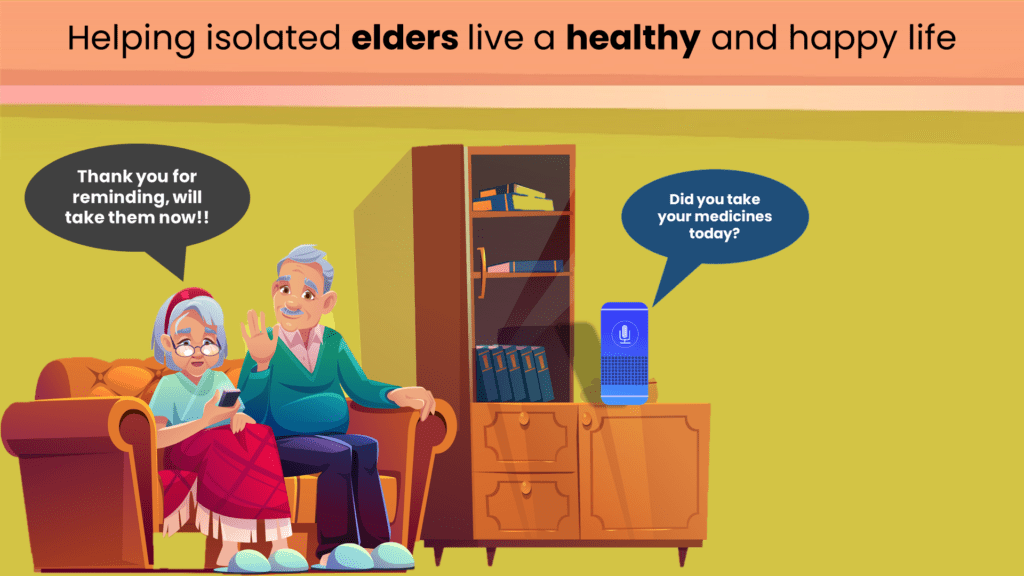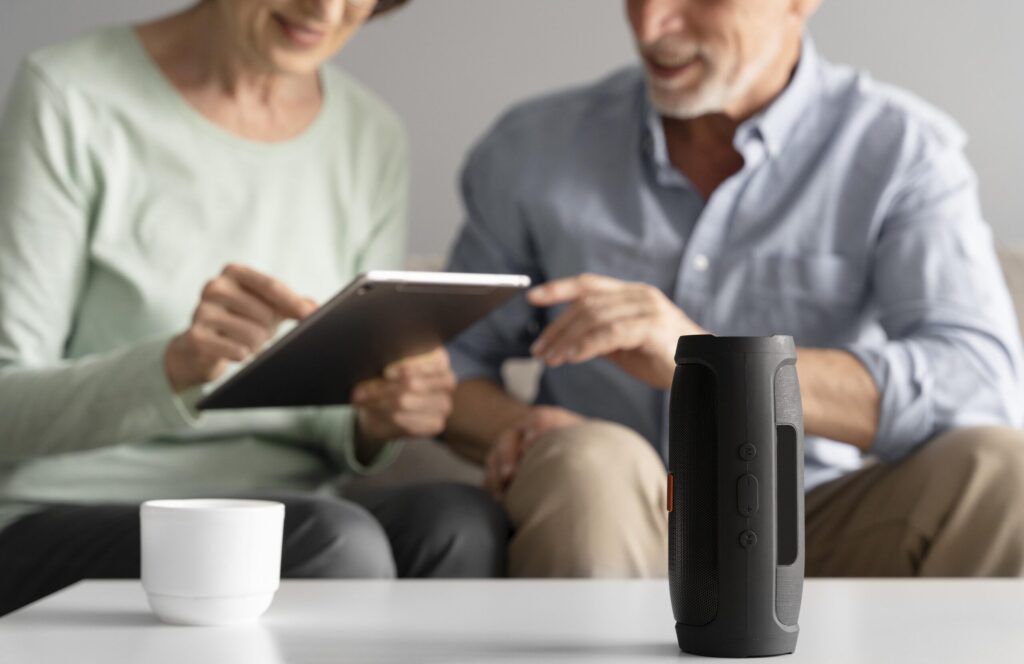There is rapid growth in the aging population worldwide, specifically in the growing economies of Europe, Japan, and China. Statistics reveal that the percentage of the world’s population above the age of 60 will grow from 12 to 22% between the years 2000 and 2050. During this period, people above 80 years are likely to quadruple.
Geriatric diseases include atherosclerosis, osteoporosis, cardiovascular diseases, obesity, diabetes, dementia, and osteoarthritis. These health conditions require continuous supervision, quick diagnosis, and quality care by a professional caregiver.
The need for assisted living for the elderly is rising along with a reduction in the number of trained healthcare professionals. Studies indicate that the US will experience a shortfall of physicians and healthcare professionals by 40,800 and 104,900 by 2030.
To match this increase in demand, Healthcare providers are bringing in AI-based automation. From tracking biometric information to early diagnosis of disease, understanding treatment plans help clinicians to treat conditions more effectively.
In elderly care, voice-based AI models should be a combination of environmental and psychological sensing (for monitoring the status of the environment and the senior).
AI modules for intelligent services include activity recognition, reminders, proactive suggestions, health coaching and actuators, intelligent interfaces, and robotic platforms for assistance.
Voice-enabled technology facilitates assisted living for the elderly. It encourages dialogue-based interaction with the machines and helps deliver valuable care.
What is a dialogue-based interactive device/ voice-controlled device?
Voice assistants are the devices/apps that use voice recognition technology, natural language processing (NLP), and AI to respond to humans. The device synthesizes the user’s message, segments it, evaluates it, and provides a meaningful human-like response.
There are two main categories of AI voice assistants –
- Generic, like Siri and Alexa
- The bot voice assistant, an integrated into a cognitive app/website to help the users guide its services.
47Bilion has worked on such consumer-facing voice applications (Download Case study- cognition-based companion applications). These solutions do not directly enable clinicians and caregivers with diagnosis and treatment but play an essential role in care delivery.
These voice-enabled assistants allow patients with medication reminders. It is similar to a healthcare attendant but uses a voice assistant instead.
How voice controlled dialogue systems work?
Conversation user interfaces (CUI) or voice user interfaces (VUI) replace the graphical user interface (GUI) in voice assistants. The usage context is linked to requirements, and they can react to various questions.
Dialogue systems use NLP to analyze speech in text form and to understand the intent of speaking. After identifying the purpose, it sends the request using underlying API connections. NLP uses text from multiple languages, and Text-to-speech engines help convert these languages and generate text from speech. The text is used for output or converted into spoken language using speech to text engine.
Possibilities with Voice Assistants
IoT and AI have made controlling actions an easier task.
Adding an intelligent speaker with all the smart devices could be significant. Just a voice command is enough! These intelligent voice-based devices don’t work alone they work collaboratively with an application. We can use this collaborative functionality for two categories of residents –
The Elderly
Getting old comes with losing some of the physical, mental, and emotional capabilities. For the elderly, these changes often bring resentment and depression.
Smart home technology cannot replace human assistance. Companies are developing cognition-based applications to simplify the lives of isolated elders.
A smart speaker with a voice-activated assistant can be helpful to isolated seniors as a tool and a digital companion. These smart speakers are easy to use and help improve seniors’ day-to-day lives. Voice assistants can become administrative, clinical, and emotional support systems.
- Administrative – Voice assistants can remove all the gaps in internal and external community-wide communications. Communities struggle to circulate information, and residents with memory loss and mobility limitations may forget the announcements. The voice assistants help with event reminders.
- Clinical – Smart speakers help the elderly to manage their personal healthcare needs. Individual needs include exercise routines, medication reminders, checkup routines, etc.
- Emotional – The voice assistant helps send messages to their loved ones and facilitates communication between them and their family members who live away from them. It prevents isolation and loneliness.
Disabled Patients
Thanks to IoT, a fully accessible home has been easier in recent years. Today there is no need to adopt a disability-specific device to perform any task. IoT and smartphones can do this for any disabled person. For people suffering from chronic diseases and other health conditions, reduced physical movement can cause a problem in their daily routine at home.
An interconnected network of all the home devices can improve accessibility. It has become a life-changing option for people with disabilities.
Disabled people now have an alternative to typing information into a device. They are now moving towards a world where they transmit their voice commands to a smart speaker or personal assistant on a wearable device or smartphone.
This helps make their homes accessible to foster self-reliance and get an opportunity for a better life. Integrated systems such as Amazon Alexa, Google Assistant, and voice-enabled cognitive applications to help disabled people can expand their capabilities.
Assisted Living
Today, several smart devices help the elderly and people with disabilities improve their quality of life. Smart speakers and voice assistants have become a life-changing innovation for these individuals. These voice assistants allow them to speak as they communicate in their day-to-day lives about their requirements or request any information they seek. They will get an immediate response.
From an accessibility point of view, voice-controlled home-based intelligent personal assistants (IPA) can use speech interaction for dictation, screen reader output, and virtual assistance.
Senior adults look forward to this tech collaboration to make their lives independent, more accessible, safe, and healthier.
Voice assistants are not the only devices that respond to verbal requests. They are a point of communication between you and the network of connected devices.
The voice assistant is the hub of your smart home; it streamlines your relationship with technology.
These assistants have an interaction paradigm. This paradigm provides an interface allowing users to save patterns of information (e.g., check the weather, ask for an appointment, add a shopping list). They help control home appliances and lighting, lock doors, and perform various online activities.

Voice Technology for Senior Living
There are several reasons why specific senior living advisory organizations should choose voice technology to help in improving residents’ health and life. Apart from being a cutting-edge technology, it can aid isolated residents and people with limited mobility. Here are some benefits –
- The accomplishment of tasks with additional risks – people at fall risk can accomplish tasks from their place. They can control lights. Perform daily activities.
- Affordable means of care – It has connected several people and is a convenient, affordable way of providing care. It saves thousands of dollars by reducing home care assistance.
- Reduces the fear of isolation – residents need interaction all day to stay motivated in this era of social distancing and isolation. An intelligent Voice assistant acts as a companion. It understands residents’ preferences and provides accurate responses and meaningful communication.
Conclusion
The voice-enabled technology has been a breakthrough in elderly care as they accomplish tasks simply through voice commands. Voice-assisted homecare is helping older adults, service providers, and caregivers with its simplicity and usability. As life expectancies increase, the elder will spend more time at home. Voice assistants are going to help their lives more comfortable and connected.







